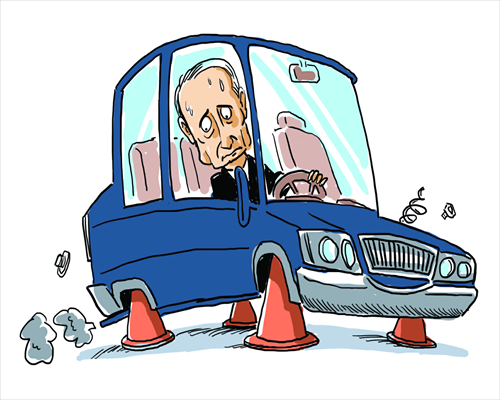Push for Eurasian union bogged down in persistent technical difficulties

Illustration: Liu Rui/GT
The Eurasian Economic Union is the next step in the integration of Belarus, Russia and Kazakhstan, due to be launched in 2015.
The integration of the three countries started in 2010 with the Customs Union, then the Common Economic Space in 2012. But the big defect of this process is that it has developed too rapidly. Without solving the problems of each level of integration, Belarus, Russia and Kazakhstan declared the next level.
The Custom Union suggests the elimination of tariff and non-tariff barriers in trade, unification of foreign trade procedures and duties, and removal of internal border controls. But serious contradictions remain.
For example, Belarus pays export duties for oil products to the Russian budget. It costs Belarus $2 billion to $3 billion annually. This is big money for a country that has problems with the payment balance, and Belarus is expecting to liquidate these taxes after 2015.
The Common Economic Space called for movement of goods, services, funds and migration of employees. Right now, we only have freedom in movement of goods, and even this has big exceptions.
Today, there are many exceptions and limitations in the mutual trade. The most problematic trade goods are alcohol, tobacco, medical devices, gas, oil, petrochemicals, cars and fish, all of which have safety issues or other concerns, such as worries about low-grade alcohol.
The Common Customs Tariff worked for three countries since 2010, when customs duties on goods imported into the common territory from other countries were lifted.
After Russian's WTO entry in 2012, these common tariffs were revised, but Belarus has lost out, being forced to accept WTO conditions without receiving subsequent benefits for its own goods in WTO markets.
Another problematic topic is common technical regulation. The technical standards for products of light industry caused strikes of textile sellers in Belarus. In general, the main problem for Belarus is how to defend the positions of own manufacturers.
Compared with Kazakhstan and Russia, the country has limited resources and a weaker lobby in the Eurasian Economic Commission. The plus of integration for Belarus is the development of antitrust laws and access to public procurement of Russia and Kazakhstan.
The Eurasian Economic Union means the deeper economic integration of Belarus, Russia and Kazakhstan, with coordinated macroeconomic policy and common currency in future. However, it's still not clear how the general macroeconomic indicators will be established and controlled.
For Belarus, which has had an unpredictable economic policy, and has experienced four devaluations during the last five years, this is an important question.
Today, financial support from Russia allows Minsk to maintain a certain stability in the national economy. But now Russia has no influence on the Belarusian macroeconomic policy, and in the Eurasian Economic Union this policy should be coordinated.
A common currency is even more distant. Today it is hard to imagine that one of the countries will give up the power to issue money of its own free accord.
Belarus, Russia and Kazakhstan see the future of the Eurasian Economic Union in different ways.
For Russian President Vladimir Putin, it is more a political project, a successful opportunity to unite the members of the former Soviet Union. Belarus and Kazakhstan are interested more in the economic side of the union, and they politely asked Russia to leave issues of governance and security alone. Now these countries have less than a year to resolve these many contradictions.
The article was written by Olga Semashko, a Belarus journalist and economic observer and translated by Victoria Urbanovich, a Belarus journalist. opinion@globaltimes.com.cn